The Gift of South Dakota
Subscriptions to South Dakota Magazine make great gifts!
Subscribe today — 1 year (6 issues) is just $29!
Into the Badlands
Editor’s Note: The March/April 2016 issue of South Dakota Magazine features a story on an old World War II era bombing range in a portion of the Badlands. Mike Heintz, a South Dakota native now living in southern California, photographed the area in October of 2000. This is the story of his journey.
Heading out of Rapid City into the Badlands on Highway 44 can put you into another dimension. It starts when you drop down into the Cheyenne River Valley with its great stands of old cottonwoods. You might be lucky enough to catch them after the first frost when the leaves have turned. The wind won’t let them stay for long. From there, you approach the Badlands, a maze of eroded cliffs and spires carved in prehistoric times. They are aptly named for their inhospitable reality, stark beauty and threatening nature. Little has changed since the beginning. These canyons have produced a colorful and foreboding history.
 |
| Dozens of old cars litter a remote portion of the Badlands that was once used as a bombing range during World War II. |
Just before I entered the park I drove through the little town of Scenic. The Longhorn Bar survived there from 1906 until just a few years ago. It may well have been the most infamous bar in South Dakota. I can’t imagine the characters that sat on those bar stools made from iron tractor seats bolted to the angle iron. The bullet holes in the walls are real. Now, the skulls hung over the porch roof are melting away and falling off the board rack to which they were tied. A piece of plywood is nailed over the front door, which has become a place to note your feelings. The old sign reads:
Long Horn Saloon
1906 Scenic So Dak 1906
Whiskey Beer Wine Soda
Tobacco Lunch Dancing
Indians Allowed Lakota Iyos Nina Upo
You can sense the Pine Ridge. It lies across the White River just south of town. It’s a huge piece of land as large as the state of Connecticut. Much of it looks as it did 200 years ago, and much has happened there since. It was created as a place to contain some of the last of the warrior tribes. This can be a lonesome road because it’s little used except by the people who live out there, or by the occasional traveler wanting to see the wilder side of South Dakota. The highway gets bumpy as it crosses into the Badlands. It’s the gumbo soil on which the road is built. It’s always changing. I passed a big prairie dog town. There has been a real effort to kill them off, but with only limited success. Most drivers in that country are on a point A to B mission. Everything in between is wasted time. To me it’s a movie that’s different every time I drive it. The landscape changes with the seasons and light.
Another 20 miles and you come to the town on Interior. A survivor of its own history, these little towns next to the rez have always been a result of the collision of culture. It’s a rough and tumble place that still buys groceries at the old Badlands Store and socializes at either the Horseshoe or Wagon Wheel Bar. They have both seen wild times. The owner of the Wagon Wheel had a pet bull named Radar that he kept out back. Many a patron found out the hard way that old Radar wasn’t an easy ride. There is a gas pump across the street in a vacant lot. You can pay for gas at the bar — a good thing to know if you’re caught on Highway 44 after dark. It’s probably the only place to get gas between Kadoka and Rapid City.
It was there that my mother and I met Ansel Woodenknife at his cafe. We were the only visitors, and as usual I struck up a conversation while trying some of his special fry bread. He mixes and packages it behind the cafe. The ingredients are based on his grandmother’s recipe. He markets Woodenknife Fry Bread Mix all around the country.
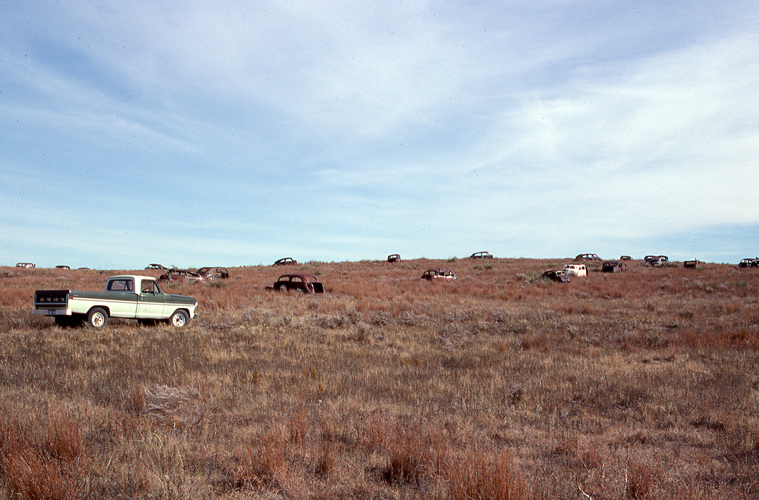 |
| Old car bodies were arranged in a circle with a cross through the middle as targets for B-17 pilots and machine gunners from the nearby Rapid City Army Air Base. |
I have been finding and photographing old abandoned vehicles all over the West for many years. I’ve felt compelled to do so out of a sense of art and history, and to do it before it’s too late. When I told Ansel about my project, he said, “I know where there are some old cars.” He said that in 1942 the then Army Air Corps seized a big piece of the Pine Ridge and turned it into a bombing range. Much of the property was confiscated and the people living there were forced to leave.
Sometime around then, many old cars were gathered and hauled out to several remote places. They were arranged in the shape of a circle with a line crossing itself in the center — a giant bull’s eye to be practice bombed. Mostly the pilots used dummy bombs filed with sand. As Ansel told the story my imagination grew. “Yes,” he said. “Those cars are still there.” We agreed that maybe someday we could go out there and find them.
The years passed by, and almost every fall when I came home from Southern California, I’d ask him about the cars. Finally, after about seven years, he said, “Let’s go tomorrow.” I met him that morning and we headed west with our pickups to get into the rez. We had to ford the White River, aptly named for the sediment it carries out of the Badlands. We drove down a little dirt road to the riverbank and he said, “Water’s too deep.” We’d have to try another time.
Three more years passed and I was visiting a friend near Silver City. I called Ansel and he said, “I’ll meet you at the station in the morning.” He had his friend Leroy with him, a very gentle older Indian who helped Ansel around the place. I first met Leroy on an earlier visit when he was loading boxes of fry bread mix into Ansel’s truck.
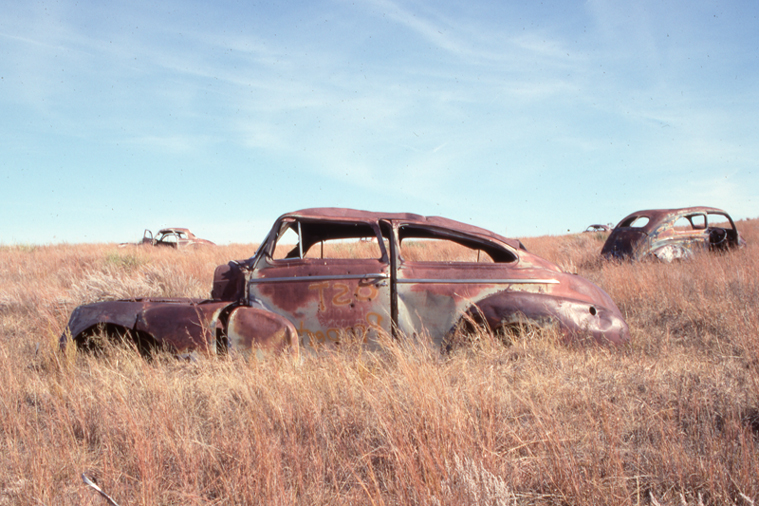 |
| Most of the cars are pre-World War II models, though some have been identified as late 1940s. |
I hadn’t even had a chance to get coffee before I raced out of the Hills and across the Badlands to Interior. By that time I was getting hungry and had no idea when I might get something to eat. The Badlands Standard had two gas pumps and sold a little bit of everything. We gassed up, I got my coffee and had a cheese sandwich that was frozen solid as a rock. Then we headed off to the White River.
This time he thought we could get across. I was apprehensive. The river was wide and so cloudy you couldn’t see the bottom. I watched them go first. The water was up to the bumper. I let them get clear across before I drove in. No way was I going to lose my truck “Butch” to that white water.
We set out across the raw prairie, occasionally coming to a fence that we had to follow until we found a gate. We climbed into the back of Ansel’s truck and Leroy pointed south to a distant set of hills. “See that pine tree on that hill way over there? The second hill to the right is where I saw the planes fly over when I was a kid,” he said. We headed that way. The grass was grazed down close to the ground, so we left no track. There aren’t many roads across that land and we weren’t even close to one. We drove a long way and never even saw a cow.
Then, as we crested a little hill, there they were. I didn’t really know what to expect, but I wasn’t quite prepared for what I saw. There must have been 50 or 60 cars out there, mostly in a circle about 40 feet apart. They were rusty brown with the burnt gold grass up to their hips. They were mostly of a 1930s vintage with a couple of ’40s. Some had roofs caved in, but most of them were intact. The engines were gone, so they were just shells.
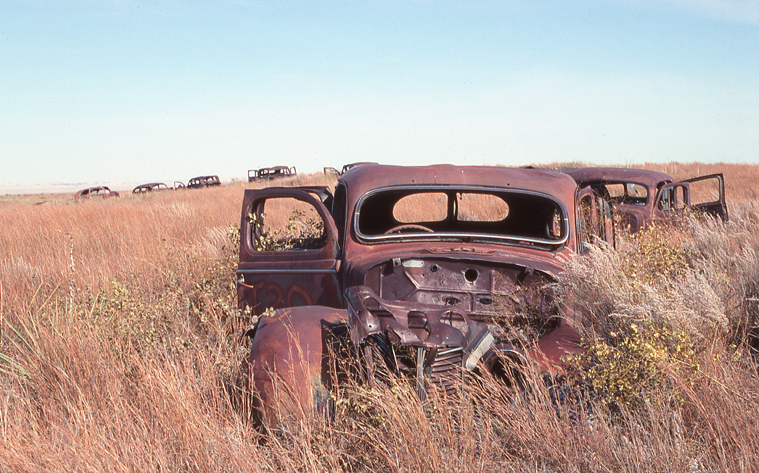 |
| Both Native and non-Native farmers were moved off their land to make way for the bombing range. |
After all these years I was finally there. After a bit, Ansel said, “We’re going to go now.” It had never occurred to me that they were going to leave me out there on my own. Could I even find my way back out? Soon the boys were gone, and I was left alone in that haunted cemetery of old cars. The grass was tall and leaning over in the wind. The cars creaked and the loneliness of that place settled into my bones. It reminded me of a little graveyard.
Shooting with film is becoming a lost art. All of my work has been on Kodachrome and most of it with a hand held camera. I like my old Nikon because it’s heavy and you can hold it still. You have to wait for a moment when the wind dies down and hold your breath for each shot. A couple of hours of that can be exhausting. I knew that I was a rare visitor, and that carried a responsibility to do my best. Sometimes you know that you were chosen for a moment in time, and I think that’s what happened on that day. Some of the cars had “OST” spray-painted on them in orange. Ansel told me that meant “Oglala Sioux Tribe.”
The days grow short in late October and I knew it would soon be time to go. I didn’t know how long it would take to find my way back. I think we had come about 14 miles, and things look different when you are going the other direction. I had to find the same spot to cross the river, maybe spend the night in the truck and continue the next day. I was lucky and got back across before dark. By that time the frozen sandwich seemed like a long time ago. I stopped at the only cafe (the Woodenknife had long since closed). The girl was curious about what I was doing out there. When I told her she said, “Oh, you’re the one. Ansel called my husband this morning and asked if he knew where those cars were?”


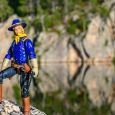
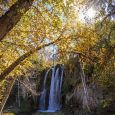
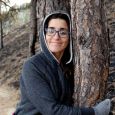
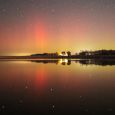
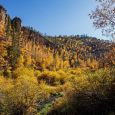



Comments
Good to see your story in print and your great photos of the old cars!
Thanks for bringing this piece of history to life with such a vivid telling.
Wonderful work Mike!!
Me: "Isn't riding a bull kinda dangerous?"
Lonny: "Waaal ... Radar ain't no bull, he's a steer. Don't you know the difference between a bull and a steer?"
Me: "Where I come from, we don't have much reason to know the difference."
Lonny: "A bull ain't got no balls."
Me: "That makes them a bit more docile, doesn't it?"
Lonny: "It sure does."
So Lonny brought Radar IN to the Wagon Wheel for me to ride. His horns were so wide, he needed to turn his head sideways to get in. And his shoulders were so tall, I needed a ladder to get on. But "get on" I did. I have the pictures and the T-shirt to prove it.
Great times. But Radar was a steer, not a bull. And Radar was on docile steer.
I read somewhere that Lonny has since passed. He struck me as part of the Dakota countryside as the Badlands.
https://www.findagrave.com/cgi-bin/fg.cgi?page=gr&GRid=21001019
Great skills you have with both camera and pen. Please do more.... a most enchanting bit of lore and human life rolled into a woven pattern of mystique. I was uplifted and filled with sadness at the same time.